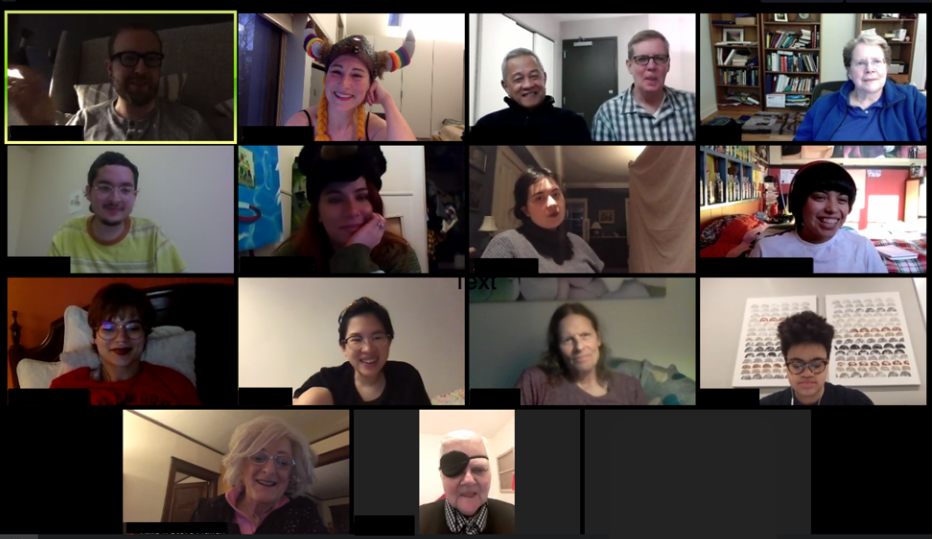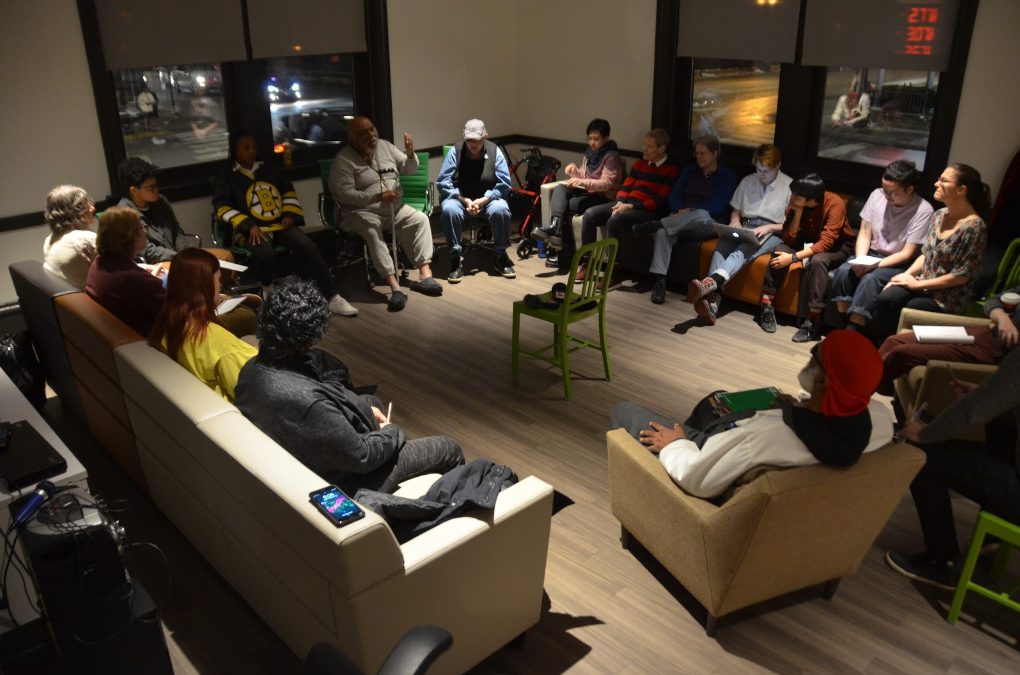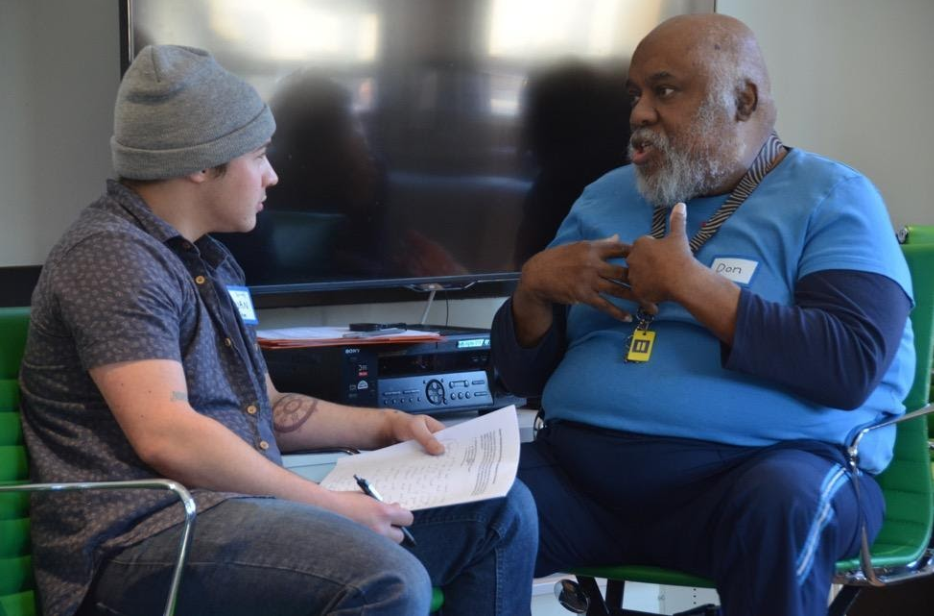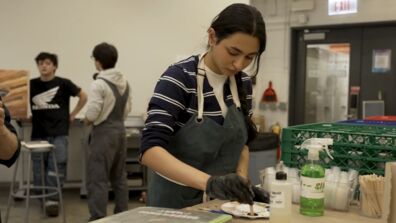
Learning to Teach LGBTQ+ History

In August of 2019, Governor JB Pritzker signed a bill that made Illinois the fourth state in the nation to require public schools to teach LGBTQ+ history. Though this was an indisputable victory for the countless organizers that championed the legislation, another challenge followed: how do you teach a history that has so often been erased?
At the School of the Art Institute of Chicago (SAIC), Associate Professor Karen Morris and Assistant Professor Adam Greteman believe that dialogues with LGBTQ+ elders (which they define as individuals 65 and older) play an essential role. “The LGBTQ+ people that are now 65 and older are the first generation to live out since they were young,” Morris shared. “Many of them really did actively create what we know as the LGBTQ+ movement in politics today. They were at the front lines and now, they feel very forgotten.”

Over the past two years, Morris and Greteman have facilitated countless dialogues between SAIC students and LGBTQ+ elders. Their work began at Chicago’s Center on Halsted—the Midwest’s largest LGBTQ+ community center. Gretemen has been volunteering at the center since 2010, and Morris was collecting oral histories there for a project commemorating the 50th anniversary of the Stonewall Riots with the nonprofit organization StoryCorps. Though they knew each other from SAIC, Greteman and Morris didn’t realize how their work overlapped until the center’s manager of senior services, Todd Williams, connected them. “We all sat down to begin imagining what we could do together, thinking about our work as professors and access to young people,” Greteman said.
From these discussions, the idea for intergenerational dialogues was born. “The LGBTQ+ community's interesting because we have almost no intergenerational contact,” Morris shared. “So, it’s this idea of like, let's just see what happens when we put these people together who would usually never talk, who have very, very different ways of seeing things.” In 2018, they started to host three-hour dialogues every two weeks with SAIC students and elders at the center, each followed by a family dinner.
The LGBTQ+ community's interesting because we have almost no intergenerational contact. So, it’s this idea of like, let's just see what happens when we put these people together who would usually never talk."
Karen Morris
The dialogues were an instant success. “These students, they may have never met an older trans person. So, that was earth-shattering, in an awesome way, for them,” Morris shared. It also gave the elders an opportunity to connect with young people, learn about the issues they’re facing, and provide support.

There was always a waitlist of students who wanted to participate, so in 2020 Greteman and Morris decided to team-teach a course centered around these dialogues, titled Generating Queers. In the course, students spend one week learning about a particular topic through documentaries and readings, such as the AIDS crisis of the 1980s and 1990s, and then talk to participating elders the next week about their lived experiences with the topic.
Elders from the Center on Halsted made a one-year commitment to the dialogues in 2019, but Greteman and Morris said that even those whose commitment has officially ended continue to join the dialogues and meet outside the class. When the pandemic forced the dialogues to move to Zoom, the sessions gave the elders and students an opportunity to connect during a time of isolation. Similarly, students who have since become alums still join both the formal and informal meetings. “We had students that I just assumed after they graduated, they wouldn’t keep coming. And they were spread all over. They're in Taiwan, they're in Florida, and they still go,” Morris said.

As part of the class, students are creating projects based on their discussions, which is housed on a website called Generation Liberation. “The students are really getting to know the stories of the elders and figuring out how to form those—in relationship to their stories—into a photobook, into a zine, into something that then can be shown and used to teach these issues,” Greteman said.
Greteman and Morris are hoping what they’ve created can serve as a model for other cities and states. They see these dialogues not only as a powerful way to build community, but as an essential component of learning and teaching LGBTQ+ history. “We get to bring the books to life in a different way, and I think that's profoundly powerful for a complicated, contradictory, large community that is still figuring out how to tell its stories,” Greteman said. “A common thing that we hear is that when one is young, you feel like you’re the only one. That is slowly drifting away because of visibility, but now the task is how we actually understand how we're part of history.”
